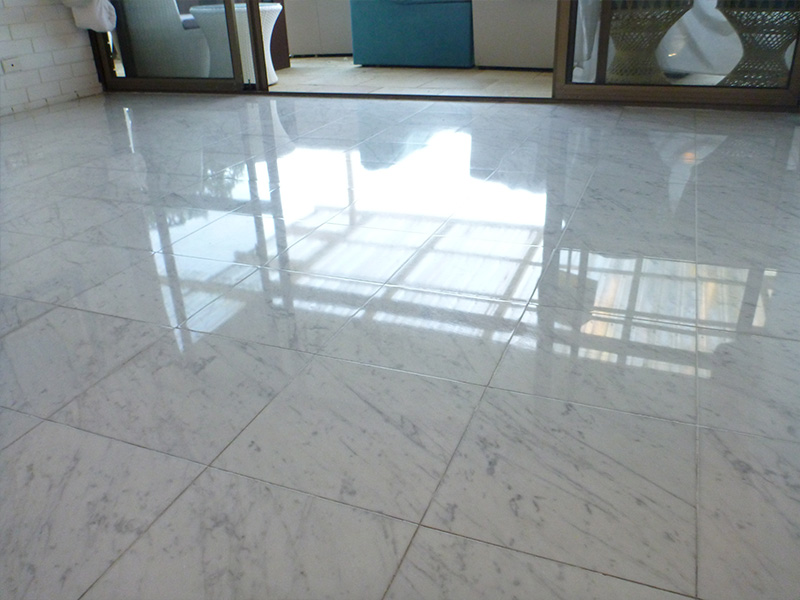Marble repair is relatively simple using a marble polishing paste. Do you need small water spots or large dark marbled spots (cheap spots) on your marble floor or countertop? Now you can polish Marble like a pro’s without the high cost of a full stone restoration job! This marble repair & polishing paste is simple, easy to apply, and takes NO energy tools. If you are having trouble sealing your marble tiles, consider this marble floor sealing product that comes in a handy bottle.
Cleaning marble is important but often overlooked. Many people let grease build up on their polished stone flooring and then wonder why they can’t clean it. Marble is just as subject to staining from grease, oil, coffee, mouthwash, gum, or pet urine as any other natural stone. Marble is susceptible to staining because of its porous nature. The porous nature of marble allows dirt and grime to seep underneath the protective coat. The best way to prevent this staining is to regularly clean your stone with an alkaline cleaner designed for cleaning marble.
Cracks, chips and stains occur over time from the everyday wear and tear. Marble is porous, so even the smallest chips and cracks will allow dirt and grime into the cracks and spaces. Over time this will cause the color to fade and the surface to become dull. Some people even scratch their tiles, thinking it will make them stand out but often do the damage to the delicate fibers. Marble repair is simple, if the damage is small and can be cleaned with an alkaline cleaner.
Small chips and cracks that are barely noticeable can be removed using normal marble repair. Simply remove the chip with a hot iron and use etch marks remover on the inside of the crack or scratch. Etch marks remover will seal the edges preventing dirt and moisture from penetrating the material. It will also help protect the marble polishing process.
Small stains can be cleaned using normal cleaning marble techniques. If there is no stain, use baking soda, white vinegar or club soda. Rinse thoroughly and let dry. Some DIY methods have been developed for deep stains such as red wine or mustard stains. For these types of stains it may require specialized equipment or chemicals.
If there are deep scratches on a marble floor tile, it is best to hire a professional to take care of the problem. For small chips and cracks, you can try a mixture of water and vinegar on the affected area. This will often result in a lightening of the dingy appearance of the scratch. Scratches made of glass or mirror particles can be repaired using coarse grit sandpaper. Then buff the surface to smooth out the area. Marble repair should only be done by a professional to ensure the highest quality finish.
Marble is one of the hardest natural stones. When cracks appear, it is best to address the problem right away. Use sand paper to sand the crack until it is even. If the crack does not get larger, you can apply epoxy or other marble crack repair products. These epoxies are applied in thin layers to fill the larger cracks.
When an area has been damaged, it may need a touch up. You do not want to begin re-coating the area if the damage was just minor. Epoxy finishes can make a big difference when properly applied. Marble tile repair can be accomplished professionally or home repair experts can do the job. If the damage is severe, it may be best to hire a professional tile fitter to get the job done right.
Stone Surface Polish offer quality stone restoration and marble repair services. Get in touch with us for a free quote.

